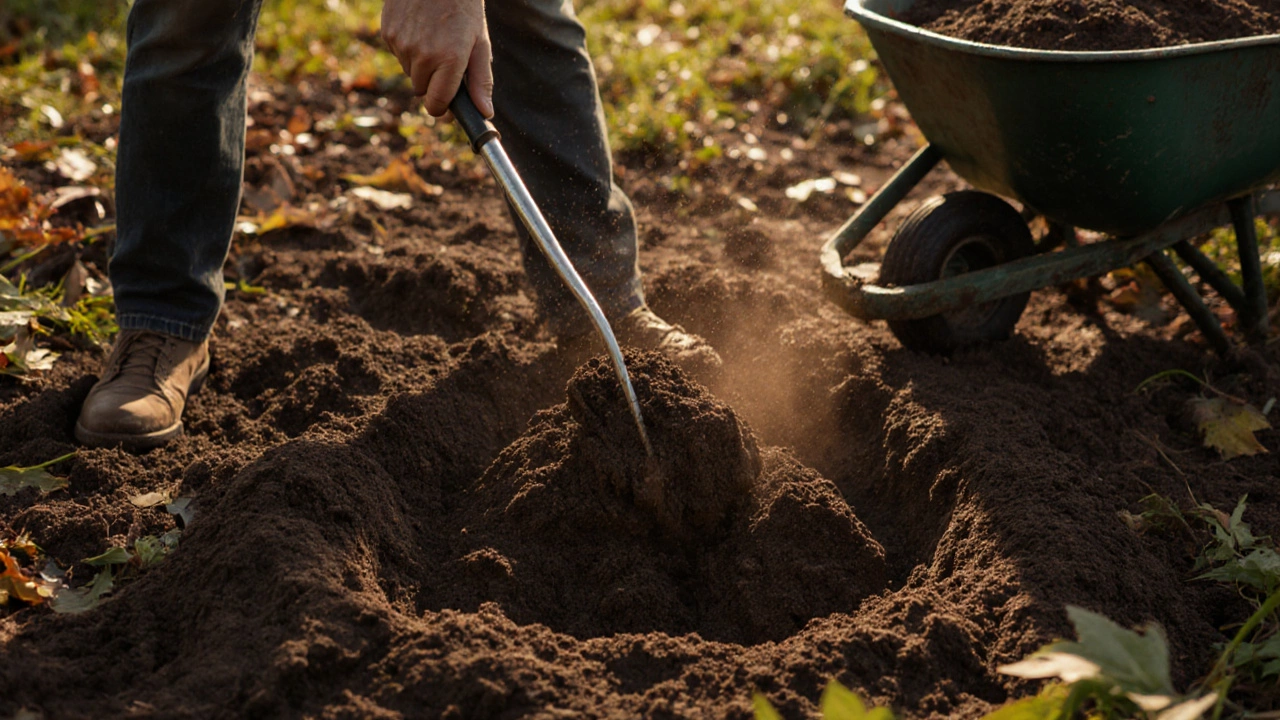Learn what to add to dense garden soil to make it easier to work with and better for plants. Discover compost, perlite, leaf mold, and other proven amendments that actually work in UK gardens.
Soil Amendments: What They Are and How They Transform Your Garden
When your plants look weak, leaves turn yellow, or water just runs off the surface, the problem isn’t usually the plant—it’s the soil amendments, materials added to soil to improve its physical properties for plant growth. Also known as soil conditioners, these aren’t fertilizers you sprinkle on top. They’re the hidden workhorses that rebuild tired dirt into something alive and hungry for growth.
Good compost, decomposed organic matter that adds nutrients and improves soil structure is the most common soil amendment, and for good reason. It’s cheap, easy to make at home, and fixes everything from clay that sticks like glue to sandy soil that drains too fast. Then there’s organic matter, anything that once lived—leaves, straw, kitchen scraps—that breaks down to feed microbes and hold water. You’ll see it in posts about balcony gardens where people mix old coffee grounds with potting soil, or in guides on composting that show how kitchen waste turns into black gold. These aren’t magic tricks. They’re science you can do with a bucket and some patience.
Soil amendments work differently across India. In Tamil Nadu, where red soil drains too fast, farmers add coco peat to hold moisture. In Punjab, where fields get compacted from heavy machinery, farmers use rice husk to loosen the ground. Even in small balcony gardens, people mix vermicompost into containers because plain potting mix runs out of steam after a few months. You don’t need fancy products. You need to understand what your soil lacks—drainage, nutrients, or structure—and pick an amendment that fixes it.
Some people think soil amendments are just for big farms. But look at the posts here: fixing clogged drip lines, growing zinnias in pots, making compost at home—all of them tie back to one thing. Healthy soil. You can buy expensive fertilizers, but if the dirt underneath is dead, nothing lasts. Soil amendments bring life back. They’re the reason some gardeners get blooms all year while others struggle. They’re why a few handfuls of compost can turn a struggling herb plant into a thriving one.
Below, you’ll find real guides from Indian gardeners who’ve tried these methods. From how to use styrofoam safely in vegetable beds to what makes the best homemade compost, every post here answers a simple question: how do you make your soil work for you, not against you?
Discover practical ways to turn dense, soggy soil into free-draining, healthy earth. Step-by-step advice and clever tips for better garden drainage.
Creating the perfect soil is essential for a flourishing vegetable garden. Start by learning what your soil lacks and what it needs. Adding organic matter like compost or aged manure can greatly enhance soil quality. Make sure to test your soil's pH levels and adjust them as needed. With the right balance of nutrients, your veggies will thrive.


